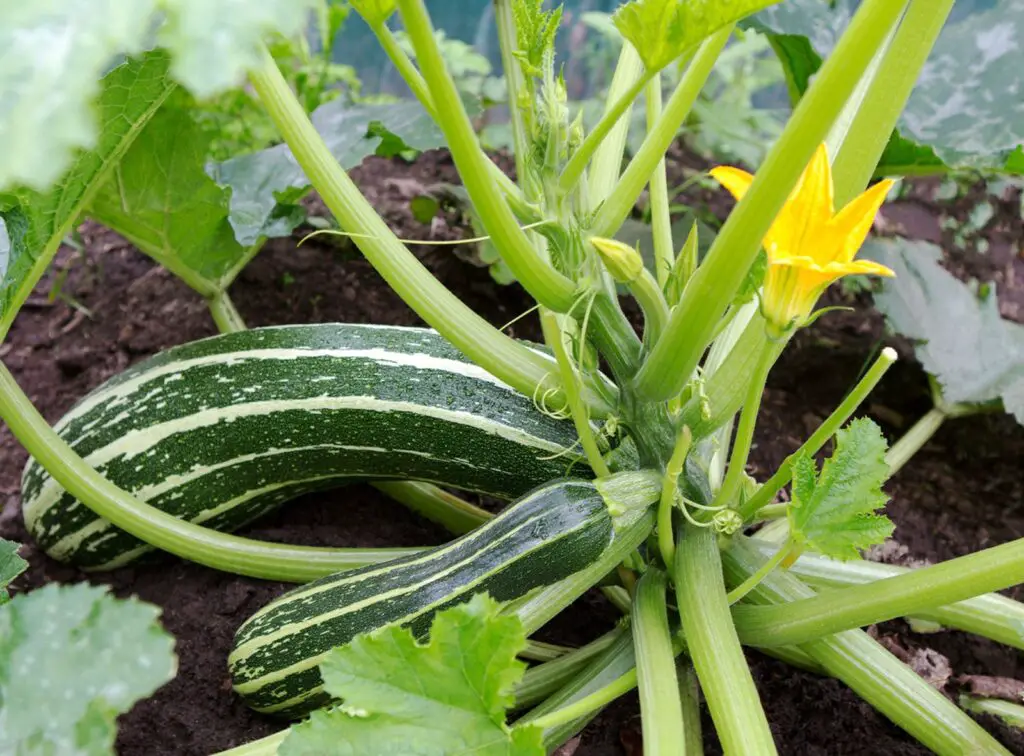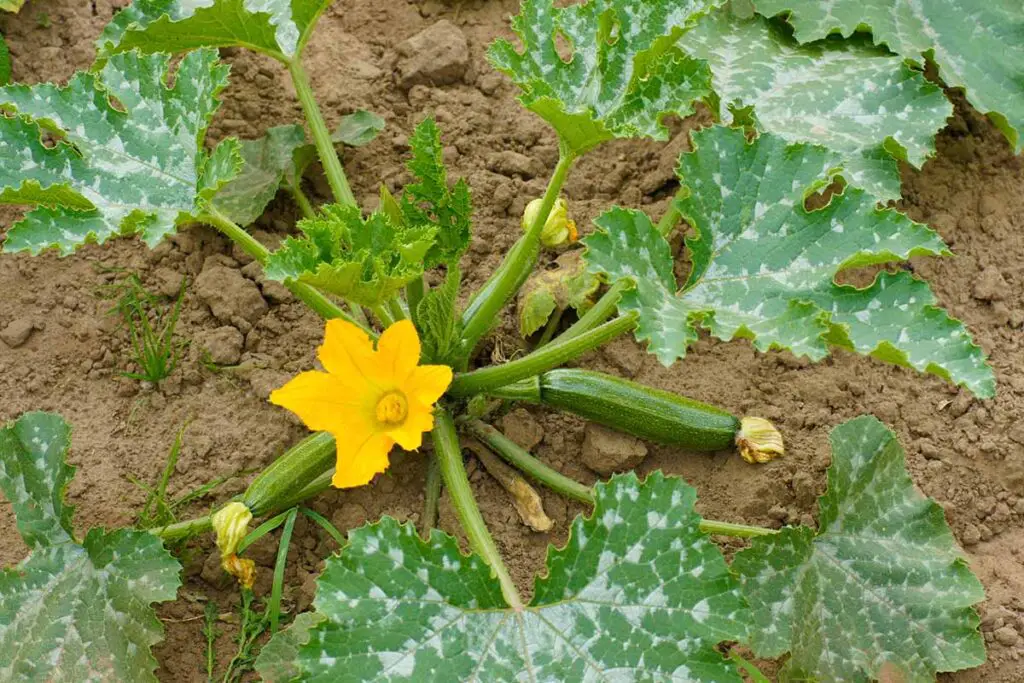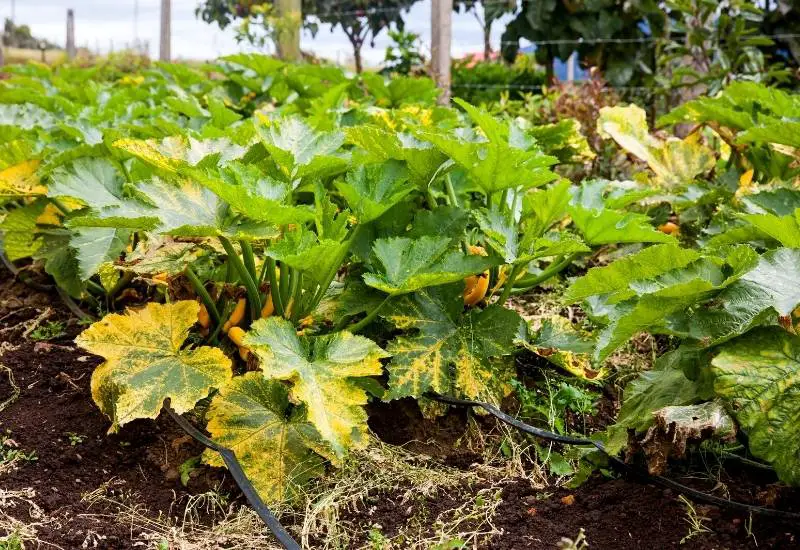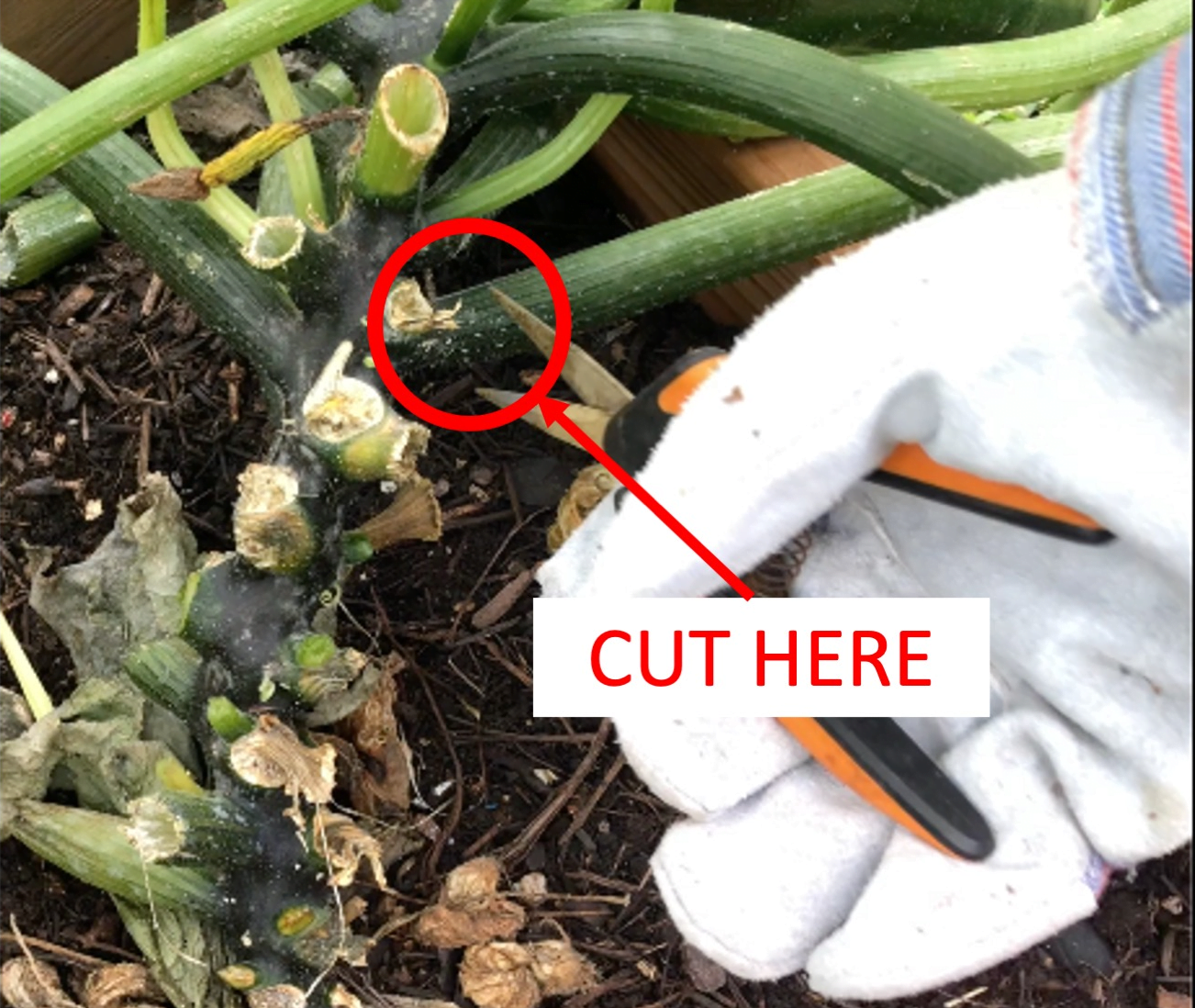Yellow zucchini leaves can be a cause for concern among gardeners, as they often indicate a potential problem with the plant. However, the question remains: should you cut off these yellow leaves? This article explores the reasons behind yellowing leaves on zucchini plants and weighs the pros and cons of removing them. By examining the possible causes and consequences of cutting off yellow leaves, you will gain insight into whether this practice is beneficial for your zucchini plants, ultimately helping you make an informed decision about the best course of action to ensure your plant’s health and productivity.
The Purpose of Zucchini Leaves
Zucchini leaves play a vital role in the overall health and growth of the plant. They serve several important functions, including absorbing sunlight for photosynthesis, regulating water through transpiration, and providing protection against pests and diseases.
Absorbing Sunlight for Photosynthesis
One of the primary purposes of zucchini leaves is to absorb sunlight and convert it into energy through the process of photosynthesis. The green pigment called chlorophyll present in the leaves captures light energy and utilizes it to produce sugars and other essential nutrients necessary for the plant’s growth and development.
Transpiration and Water Regulation
Zucchini leaves also play a crucial role in regulating water within the plant. Through a process known as transpiration, water is evaporated from the leaves, creating a continuous flow of moisture from the roots to the upper parts of the plant. This process helps in the transportation of nutrients and maintains the overall water balance, ensuring optimal hydration for the zucchini plant.
Protection Against Pests and Diseases
In addition to their role in photosynthesis and water regulation, zucchini leaves also act as a natural defense mechanism against pests and diseases. These leaves are equipped with specialized structures such as trichomes, which act as a physical barrier against insects and minimize the risk of infestation. Moreover, certain compounds present in zucchini leaves possess antimicrobial properties, providing protection against various diseases that could potentially harm the plant.
Reasons for Yellowing Zucchini Leaves
While zucchini leaves are essential for the plant’s health, they can sometimes develop yellowing, which can be an indication of underlying issues. It is essential to determine the cause of yellowing leaves to effectively address the problem and ensure the continued growth of the zucchini plant.
Natural Yellowing and Aging
One of the most common causes of yellowing zucchini leaves is natural aging. As leaves age, they naturally turn yellow and eventually die off. It is important to remember that some degree of yellowing is normal and should not be a cause for concern, especially if it is limited to a few lower leaves.
Lack of Nutrients
Another potential cause of yellowing leaves is a lack of essential nutrients. Nutrient deficiencies, particularly nitrogen, iron, or magnesium, can manifest as yellowing leaves. These deficiencies can be the result of poor soil quality or inadequate fertilization. Ensuring that the zucchini plant receives proper nutrition by providing suitable fertilizer can help address this issue.
Overwatering
Overwatering can also lead to yellowing leaves. When a zucchini plant is subjected to excessive moisture, the roots may become waterlogged, preventing the uptake of essential nutrients. This can result in yellowing leaves as the plant struggles to maintain its metabolic processes. It is crucial to water zucchini plants correctly, providing enough moisture for optimal growth without causing waterlogging.
Pests or Diseases
Yellowing zucchini leaves can also be a sign of pest infestation or disease infection. Common pests that can cause yellowing include aphids, spider mites, and whiteflies, while diseases such as powdery mildew or bacterial leaf spot can also contribute to leaf discoloration. It is important to closely inspect the plant for signs of pests or diseases and promptly address the issue to prevent further damage.
Environmental Stress
Environmental stress factors such as extreme temperatures, excessive sunlight, or inadequate air circulation can contribute to yellowing leaves. Zucchini plants are sensitive to both heat and cold, and prolonged exposure to extreme conditions can cause stress and leaf yellowing. Providing suitable growing conditions, such as adequate shade or protection from harsh weather conditions, can help prevent yellowing caused by environmental stress.

Determining the Severity of Yellowing
Not all cases of yellowing zucchini leaves require immediate action. The severity of yellowing can vary, and it is essential to assess the extent of the issue to determine the appropriate course of action.
Limited Yellowing
If the yellowing is limited to a few lower leaves and the rest of the plant appears healthy and vibrant, it may not be a cause for significant concern. Minor yellowing due to natural aging or nutrient deficiencies can often be addressed through proper care, without the need for drastic measures such as leaf removal.
Extensive Yellowing
On the other hand, if the yellowing is widespread, affecting a large number of leaves, it may indicate a more severe problem. In such cases, it is crucial to identify and address the underlying cause of the yellowing, as it can significantly impact the overall health and productivity of the zucchini plant.
Wilting and Overall Plant Health
In addition to yellowing, observing other symptoms such as wilting or stunted growth can help determine the severity of the issue. If the plant appears to be struggling and shows signs of overall decline, it may be necessary to take immediate action to prevent further damage.
Potential Benefits of Cutting Off Yellow Zucchini Leaves
In some cases, cutting off yellow zucchini leaves can be beneficial for the plant’s health and overall growth. However, it is important to consider the potential pros and cons before proceeding with leaf removal.
Redirecting Energy to Healthy Parts
By removing yellowing leaves, the plant can redirect its energy and resources towards the healthy and productive parts of the plant. This can promote the growth of new leaves, flowers, and fruits, ultimately enhancing the zucchini plant’s overall productivity.
Preventing Further Spread of Diseases
If the yellowing is caused by a disease, removing the affected leaves can help prevent the spread of the pathogens to other parts of the plant. Diseases such as powdery mildew or bacterial leaf spot can quickly spread through contact, and early intervention through leaf removal can minimize the impact on the zucchini plant.
Improved Aesthetic Appearance
Cutting off yellowing leaves can also contribute to the overall aesthetic appearance of the zucchini plant. Yellowing leaves may detract from the visual appeal of the plant, and removing them can create a neater and more visually pleasing appearance.

Potential Drawbacks of Cutting Off Yellow Zucchini Leaves
While there are benefits to removing yellow zucchini leaves, it is important to consider the potential drawbacks as well.
Reduced Photosynthesis and Nutrient Production
Cutting off leaves inhibits the plant’s ability to carry out photosynthesis and produce essential nutrients. As a result, removing a large number of leaves can potentially reduce the plant’s overall energy reserves and nutrient availability, hindering its growth and productivity.
Increased Stress on the Plant
Leaf removal can cause stress to the zucchini plant, especially if done improperly or excessively. Pruning can disrupt the plant’s natural balance and may result in reduced vigor and slower recovery. Care should be taken to minimize stress during the pruning process.
Susceptibility to Sunburn
Zucchini leaves provide shade and protection to the more delicate parts of the plant, such as fruits and young stems. Removing a significant number of leaves can expose these vulnerable parts to excessive sunlight, increasing the risk of sunburn and damage.
Reduced Protection Against Pests
Zucchini leaves serve as a physical barrier against pests, and removing them can diminish the plant’s natural defense mechanism. Without the protection provided by the leaves, the zucchini plant may become more susceptible to pest infestation and subsequent damage.
Steps to Safely Remove Yellowing Leaves
If you decide to remove yellowing zucchini leaves, it is important to follow proper pruning techniques to minimize stress and promote healthy growth.
Assessing the Extent of Yellowing
Begin by assessing the extent of the yellowing. Identify the leaves that are severely affected and determine the number of leaves that need to be removed. It is important to strike a balance between leaf removal and ensuring that an adequate number of healthy leaves remain to support the plant’s growth.
Sanitizing Tools
Before pruning, it is crucial to sanitize your pruning tools to prevent the spread of diseases. Cleaning the blades with a solution of one part bleach to ten parts water can help disinfect the tools and reduce the risk of contamination.
Careful Pruning Technique
When pruning, make clean cuts just above the leaf nodes, ensuring that the remaining healthy tissue is not damaged. Avoid tearing or ripping the leaves, as this can cause additional stress to the plant. Remove only the necessary amount of yellowing leaves, being mindful not to remove an excessive number that could harm the plant.
Proper Disposal of Removed Leaves
After the pruning process, it is important to properly dispose of the removed leaves. Do not leave them near the zucchini plant, as they can attract pests or serve as a source of disease. Consider composting the leaves or disposing of them in sealed bags to prevent any potential harm to the plant or surrounding environment.

Preventing Yellowing of Zucchini Leaves
Implementing preventive measures can help reduce the likelihood of yellowing zucchini leaves, ensuring the plant’s overall health and productivity.
Provide Adequate Nutrients
Maintaining proper soil fertility and providing adequate nutrients is essential for preventing nutrient deficiencies and subsequent leaf yellowing. Conduct soil tests to determine any deficiencies and adjust fertilization practices accordingly. Use fertilizers suitable for zucchini plants and follow recommended application rates to ensure optimal nutrient availability.
Optimal Watering Practices
Proper watering practices are crucial to prevent both under and overwatering. Ensure that the zucchini plant receives sufficient water but avoid excessive moisture that can result in waterlogging and yellowing leaves. Regularly monitor soil moisture levels and water deeply but infrequently, allowing the soil to partially dry out between watering sessions.
Protecting Against Pests and Diseases
Regularly inspect the zucchini plant for signs of pests or diseases and take prompt action if detected. Implement preventive measures such as using organic or chemical treatments to control pests and maintaining proper hygiene practices to minimize the risk of disease infection. Additionally, providing adequate air circulation around the plant can help prevent the spread of diseases and promote overall leaf health.
Maintaining Suitable Environmental Conditions
Creating and maintaining suitable environmental conditions is crucial for preventing yellowing of zucchini leaves. Ensure that the plants are grown in locations with appropriate sunlight, temperature, and humidity levels. Providing shade during excessively hot periods can help prevent stress and leaf discoloration. Additionally, protecting the plants from strong winds or adverse weather conditions can also contribute to the overall health of the leaves.
When Not to Remove Yellow Zucchini Leaves
While yellowing leaves may be cause for concern, there are instances when it is best to leave them on the zucchini plant.
Minor Yellowing with Healthy Plant Growth
If the yellowing is minimal and the plant continues to grow healthily, it may not be necessary to remove the yellow leaves. In such cases, the plant is likely compensating for the aging leaves by producing new, healthy leaves. Regular monitoring of the plant’s progress can help determine if the yellowing is a natural part of the growth cycle or indicative of a more severe problem.
Limited Yellowing due to Natural Aging
As previously mentioned, some degree of yellowing due to natural aging is normal. If the yellowing is limited to a few lower leaves and does not spread rapidly or affect the overall health of the plant, it can be left alone without significant consequences.
Limited Impact on Overall Plant Health
If the yellowing has minimal impact on the overall health and productivity of the zucchini plant, it may be best to leave the leaves untouched. Removing leaves unnecessarily can introduce additional stress and potentially impede the plant’s growth.

Seeking Professional Advice
If you are unsure about the appropriate course of action for your yellowing zucchini leaves, it may be beneficial to seek professional advice.
Consulting a Gardening Expert
A gardening expert or horticulturist can provide guidance and insights tailored to your specific situation. They can assess the yellowing leaves, identify the underlying cause, and offer recommendations for treatment or mitigation.
Testing Soil and Leaf Samples
Soil testing can provide valuable information about the nutrient levels and pH of the soil, helping to pinpoint any deficiencies or imbalances. Taking leaf samples for laboratory analysis can also help identify specific nutrient deficiencies or detect the presence of pathogens.
Identifying Specific Diseases or Pests
Certain diseases or pests may require specialized treatment or management strategies. If you suspect that yellowing leaves are due to a specific disease or pest infestation, consulting with a professional can help identify the exact cause and provide appropriate recommendations for control.
Conclusion
In conclusion, yellowing zucchini leaves can be a cause for concern but should be assessed carefully to determine the appropriate course of action. Understanding the purpose of zucchini leaves and the potential reasons for yellowing is crucial in addressing the issue effectively. While cutting off yellowing leaves can have potential benefits such as redirecting energy to healthy parts and preventing disease spread, it is important to weigh the potential drawbacks such as reduced photosynthesis and increased stress on the plant. Implementing preventive measures and seeking professional advice when necessary can help maintain healthy zucchini plants and promote optimal growth.



